During our stay in Dubrovnik, we took a short day trip to the nearby country of Montenegro. The border crossing was just an hour drive away, but we had to go through passport control since Montenegro is not yet part of the EU Federation.
Formerly part of Yugoslavia till its dissolution during Balkan war of 1991, Montenegro is situated along the southern end of the Dalmatian Coast. Although Montenegrins speak a version of Croatian, their alphabet uses the Cyrillic characters – a visible reminder of the Byzantine and Russian influence on Montenegro.
Verige
After a winding drive through the mountains we came upon the Verige viewpoint which marks the entrance into Kotor Bay. Verige means chains – a name that originated from the big heavy chains that residents would position across the narrowest portion of the bay, to prevent pirates from entering the harbor.
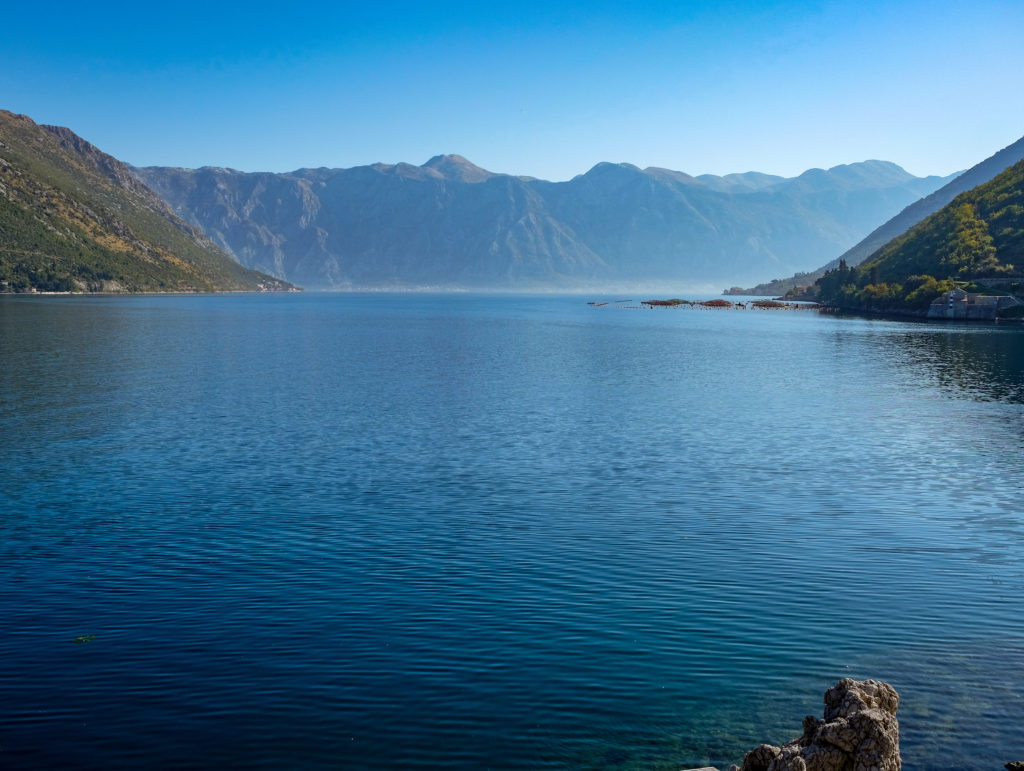
View of the entrance to Kotor Bay from Verige Viewpoint
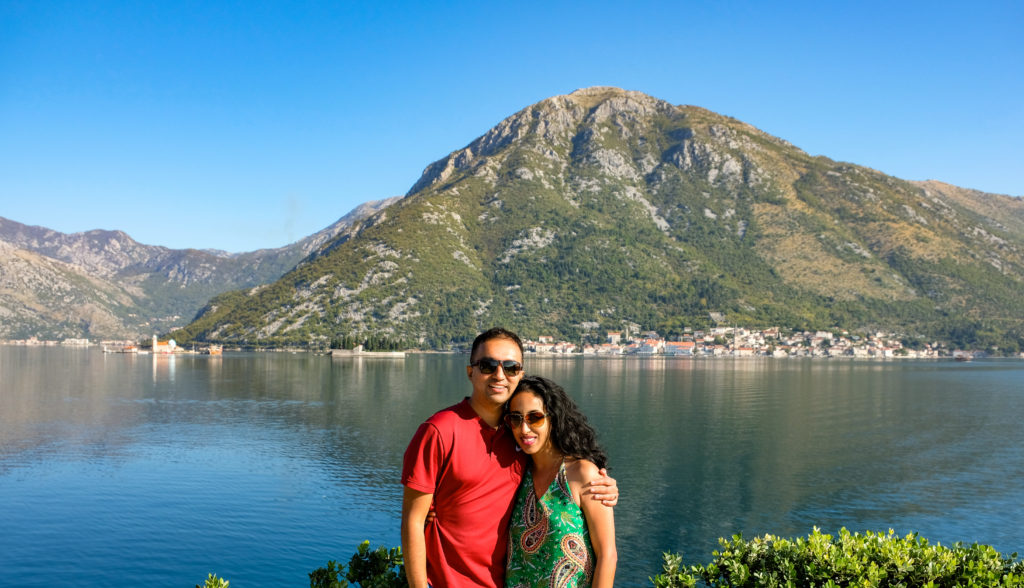
Perast Town and Church of Our Lady Of The Rocks in the background
Perast
Our next stop was at Perast, a sleepy town by the water within the bay of Kotor. Perast is most famous for its Our Lady of the Rocks church, which sits in the water; seemingly floating within the bay. Local legend has it that two brothers were shipwrecked on this small island in the bay, and found a painting of the Madonna with her child there. Taking this as a divine sign, they vowed to build a church at this spot as thanksgiving for their safety. Legends say that the island was created in the waters by dumping rocks and remains of old shipwrecks, and on this island eventually the church was built.
The interior of the church is richly decorated with stunning visuals and frescoes painted by local painter Trip Kokolja. Another interesting feature are the votive silver tablets mounted within the church walls – offerings of thanksgiving that seafarers would donate for their safe return from perilous voyages.
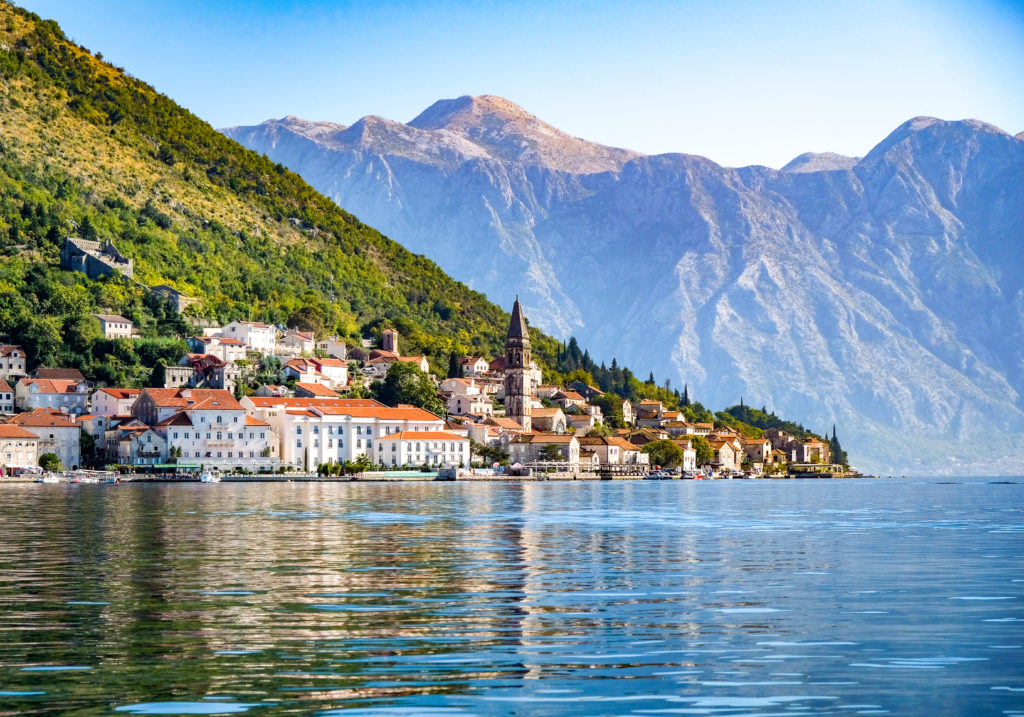
Perast skyline nestled between the mountains
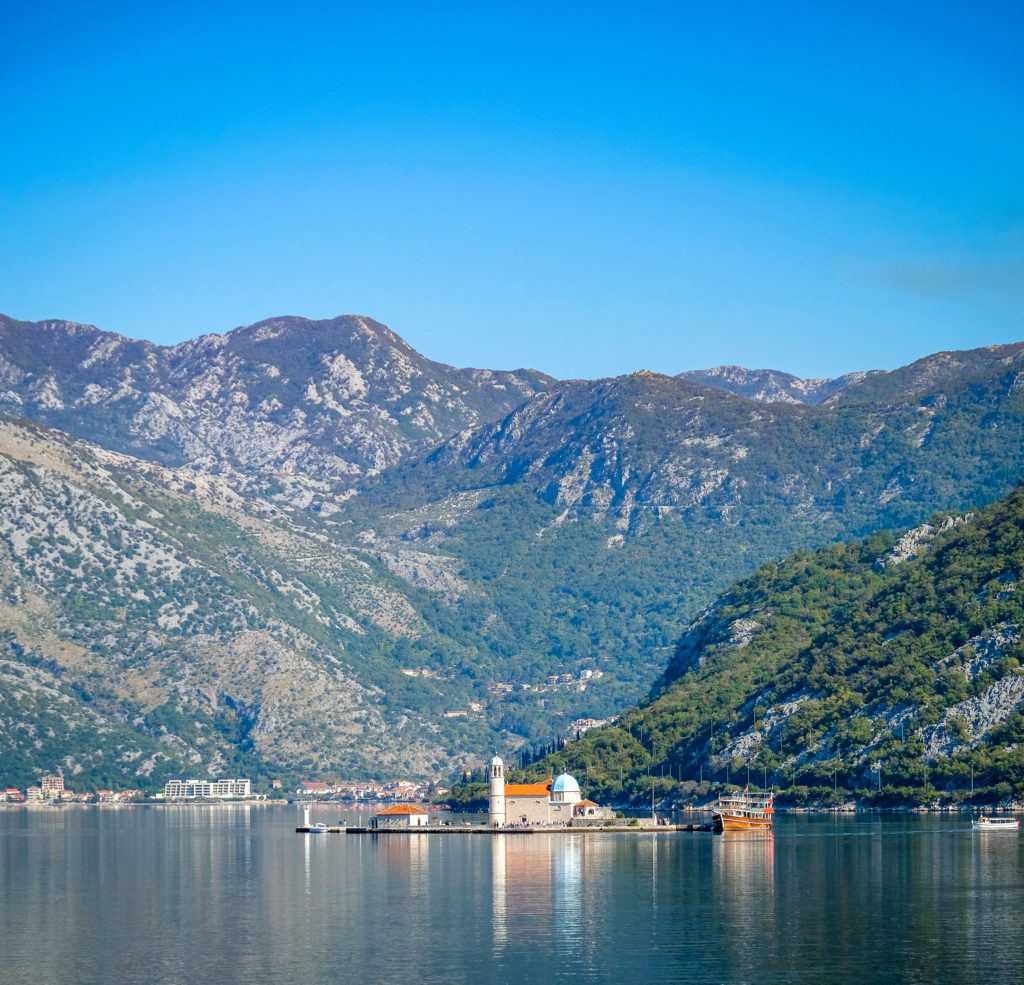
Church of Our Lady Of The Rocks seemingly floating on the water
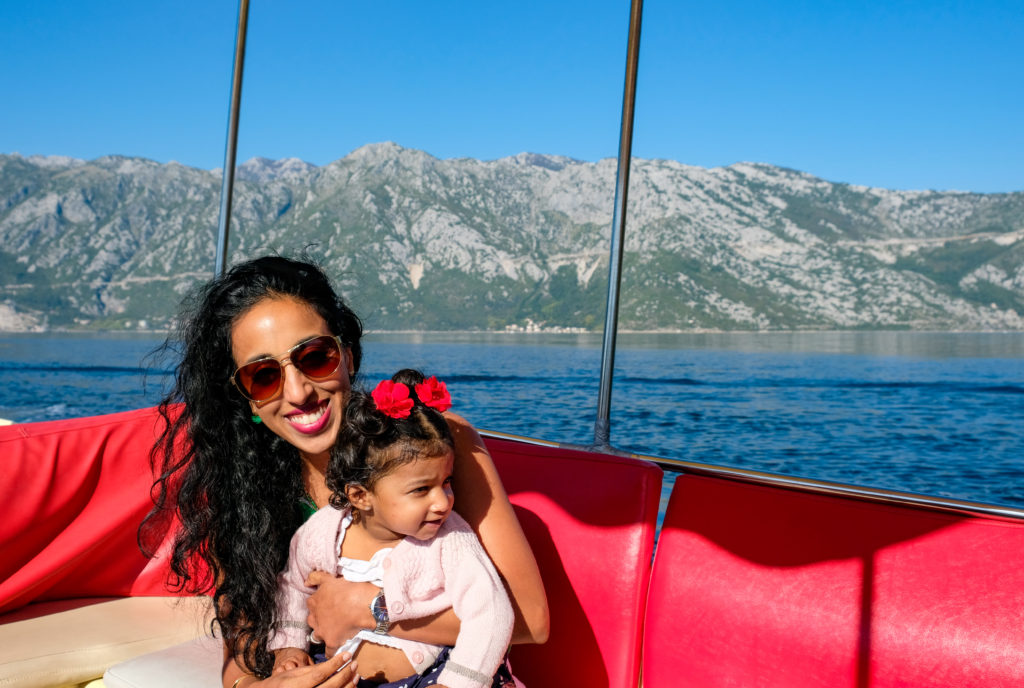
Taking a short speedboat ride to the Church
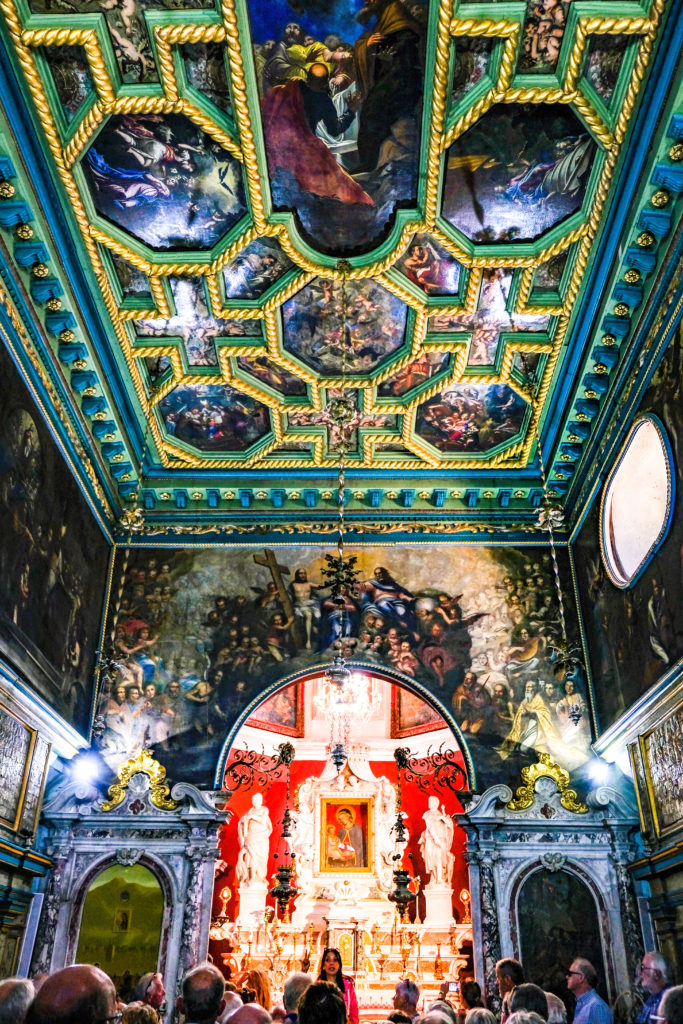
Incredibly richly decorated Church interior
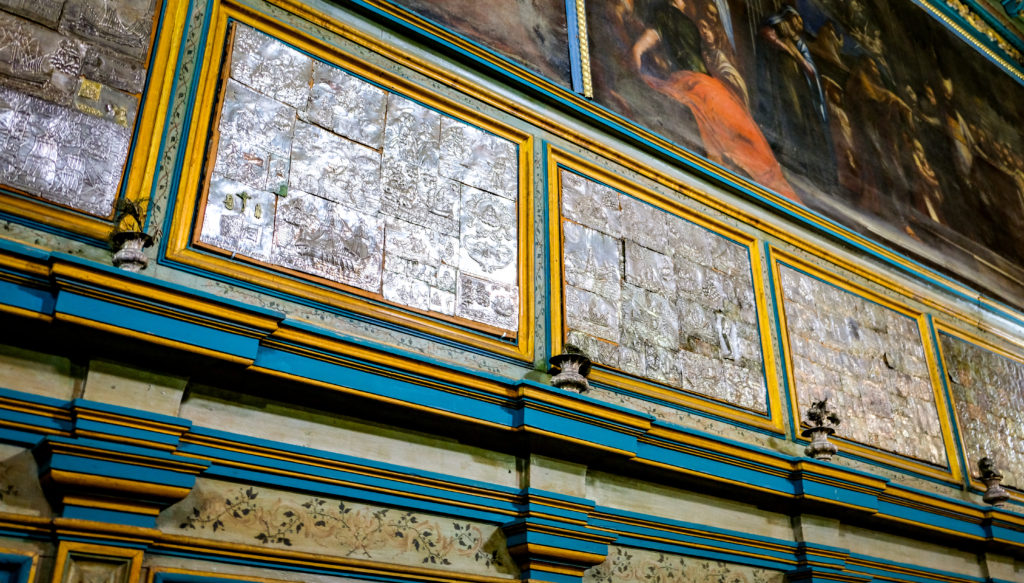
Votive silver tablets mounted on the walls by the faithful as offerings of thanksgiving
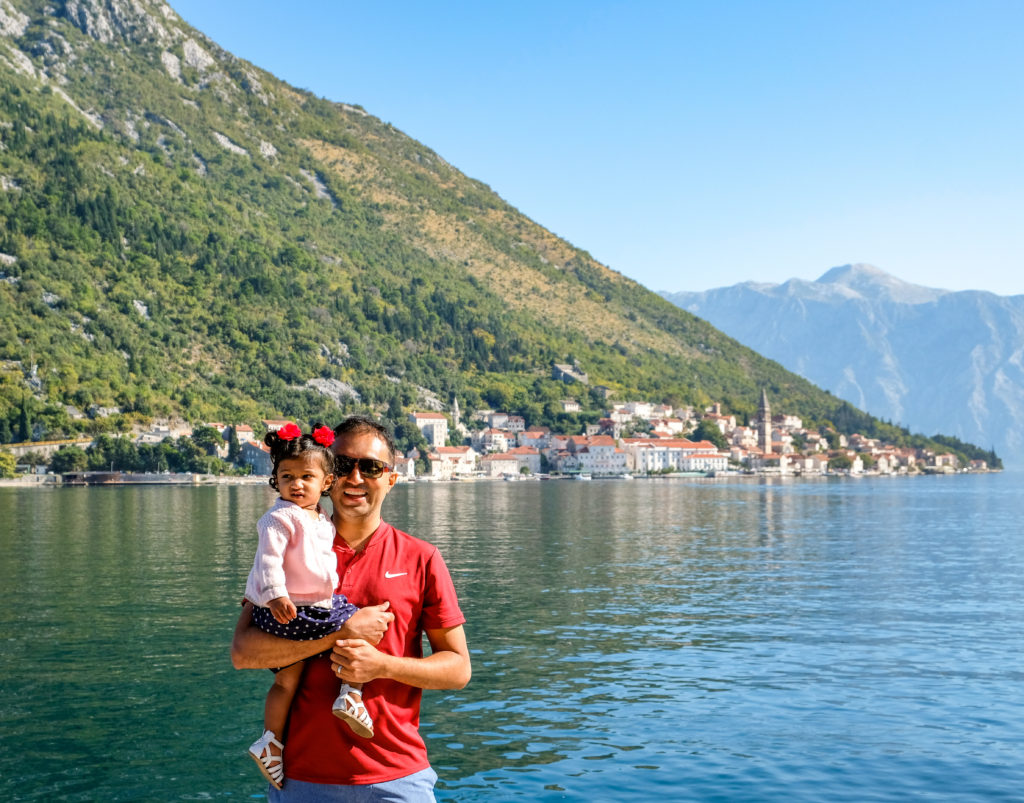
Views of Perast from the Church
Kotor
After a short stroll through Perast, we got back on the winding road to Kotor. The town of Kotor sits at the end of its namesake bay, and is the closest setting to a fjord in the Balkans – with steep limestone mountains flanking the bay and town on all sides.
We had a leisurely lunch at a restaurant in the main square, then started exploring what Kotor had to offer. This tiny city has been fortified since during Roman times in 535AD and was subsequently fortified further during medieval times. Remnant of the city walls and the lookout forts along the steep mountain are hard to miss.
The highlights of our short walking tour were praying inside the Church of St Tryphon (built in 1166AD), exploring the city fort walls, and admiring the massive icons within the Byzantine St Nicholas church.
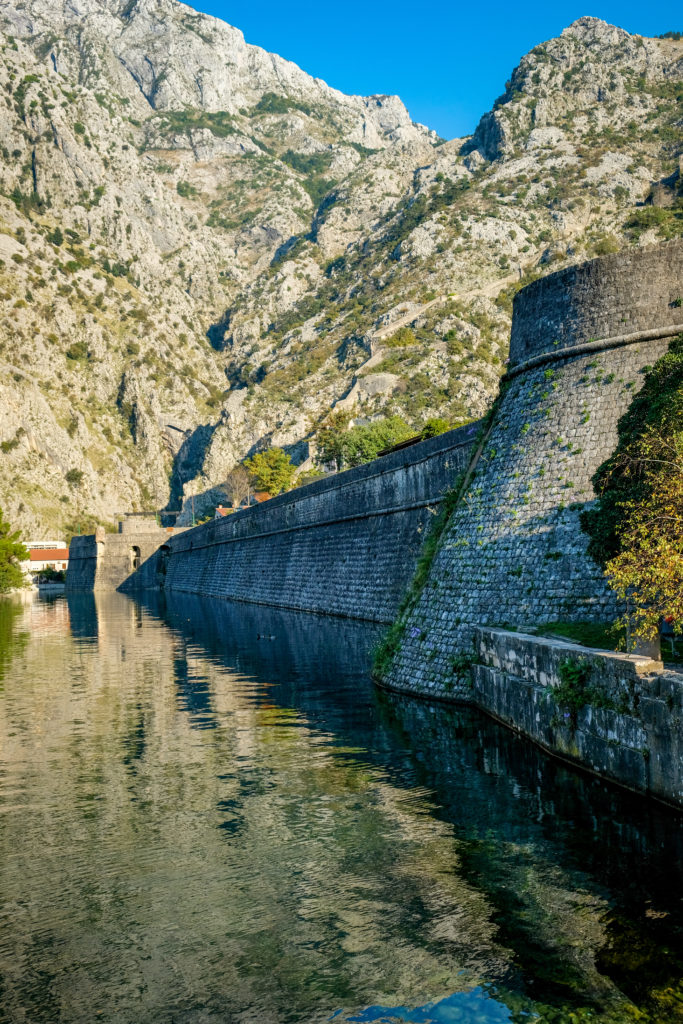
Remnants of the
Kotor city wall fortifications
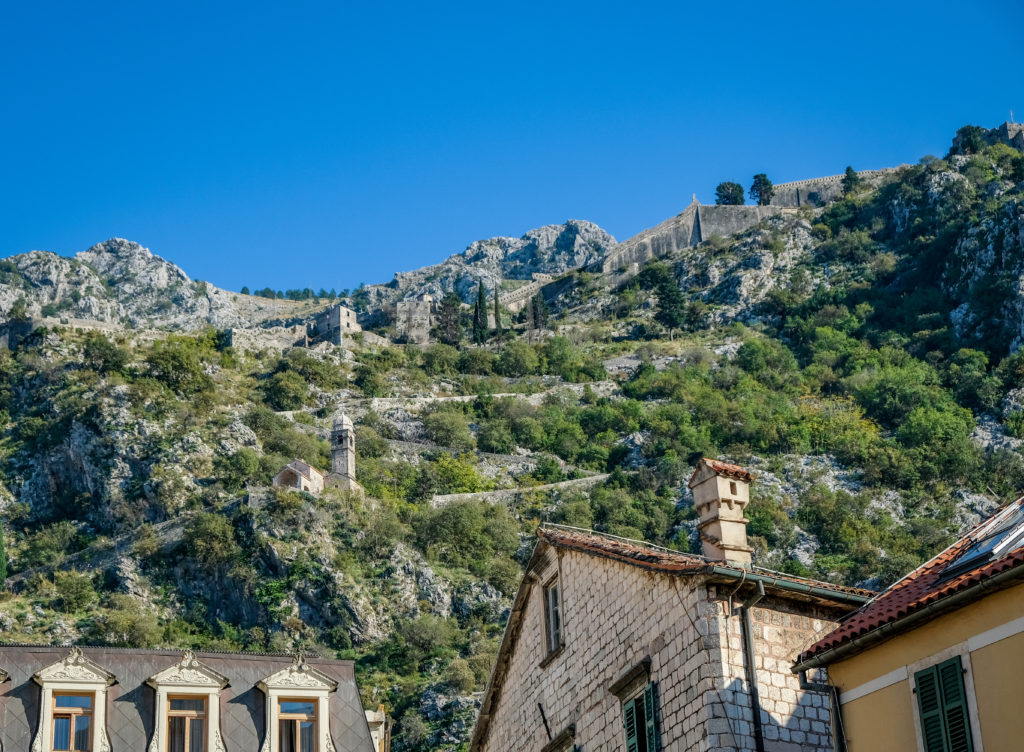
We could barely make out on the mountain the zig zag 4000+ stairs climb up to the top of Fort St John
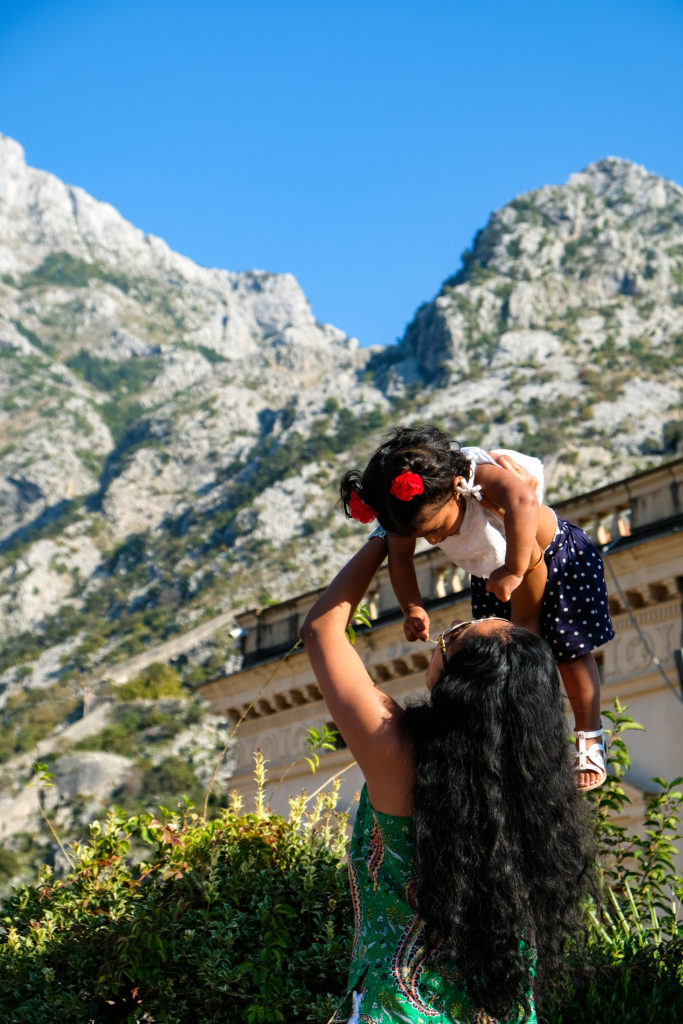
Baby A trying to get a birds eye view of Kotor
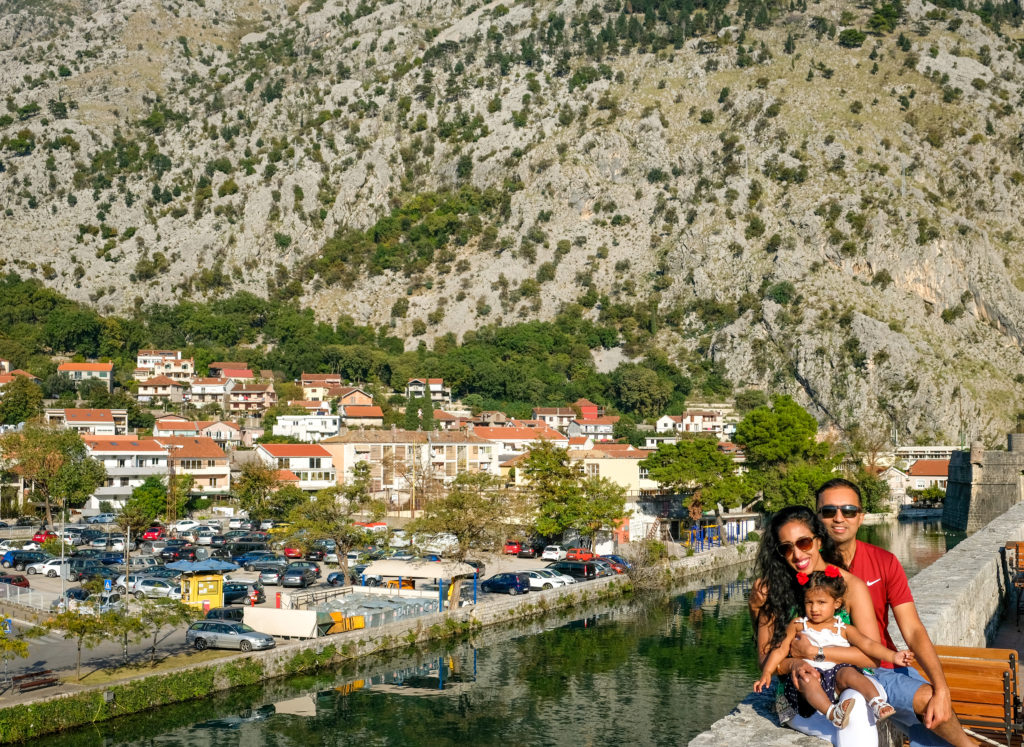
Family pose along the City Fort walls
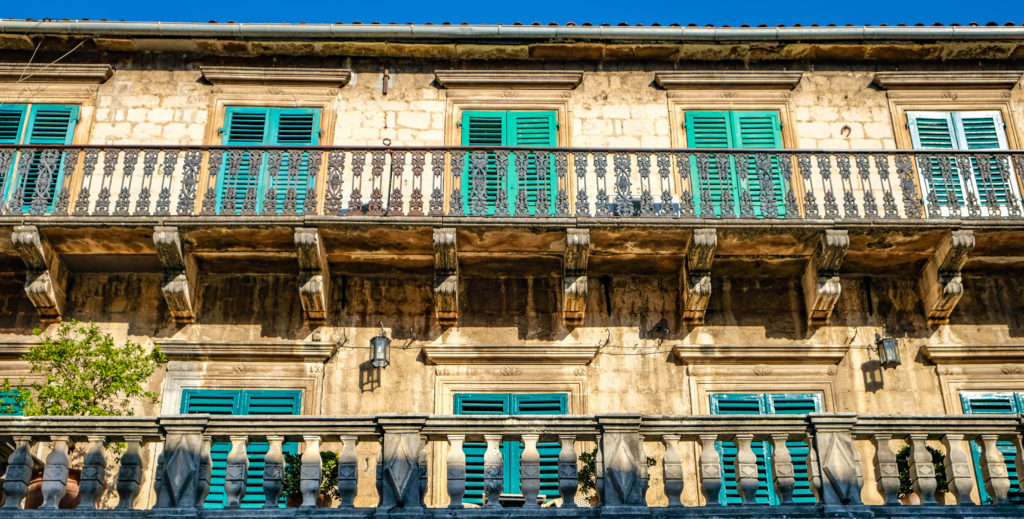
Colorful green window shutters on one of the old buildings withing the city
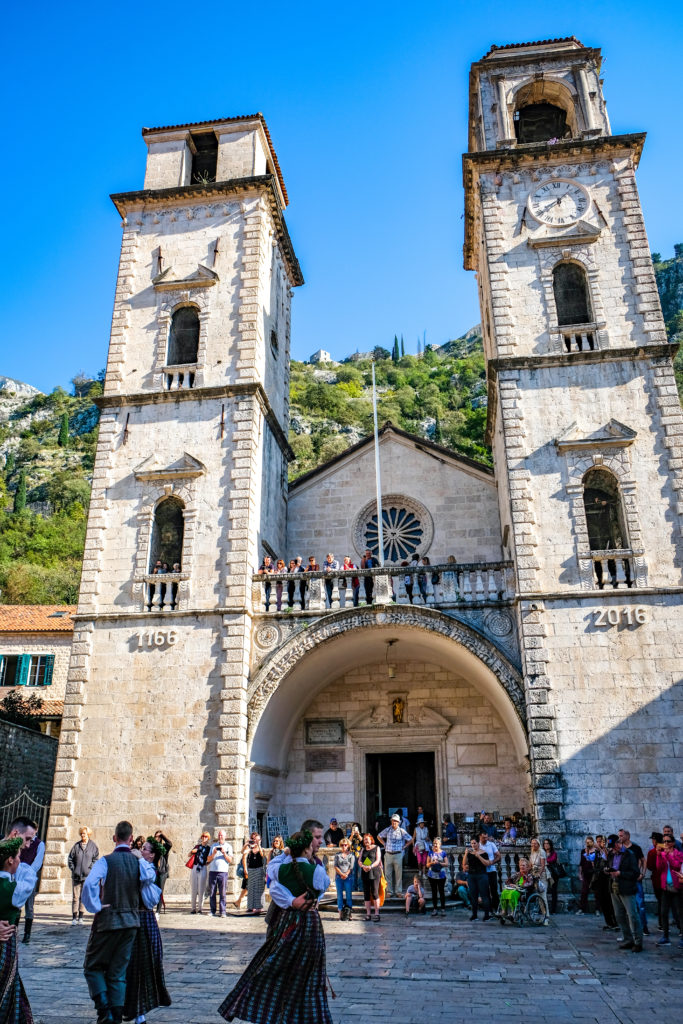
Local youth performing a folk dance in the main square in front of St Tryphon Church…
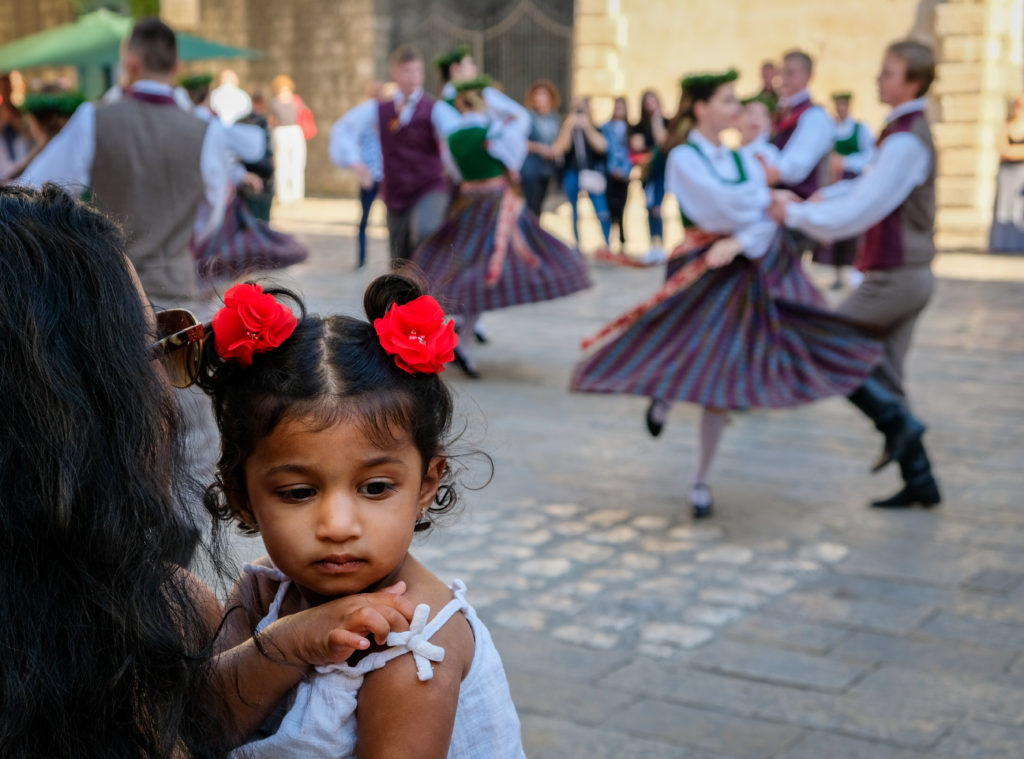
…but A didn’t seem too impressed by their moves…
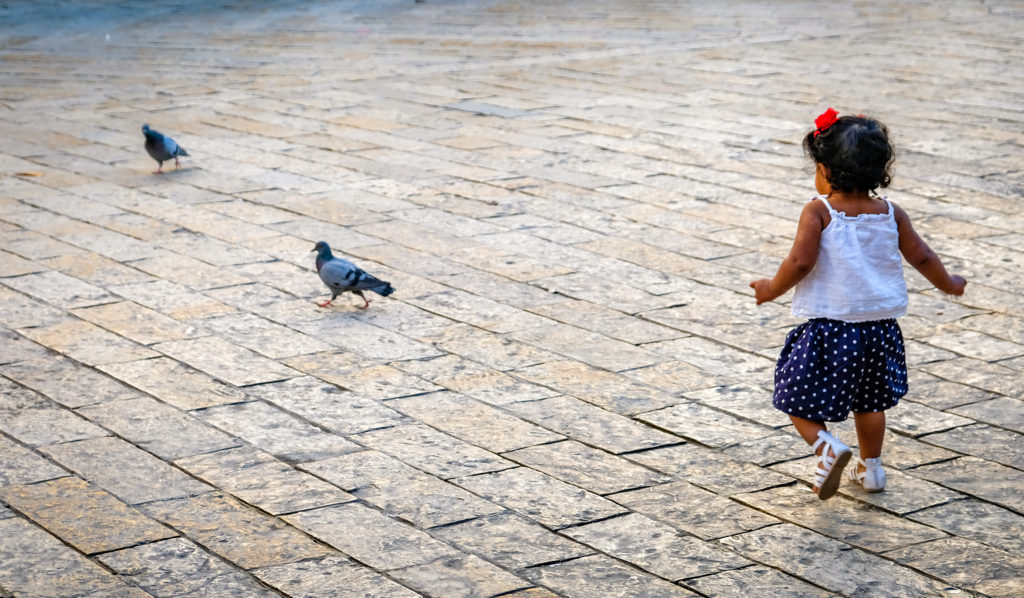
…and found her own entertainment, chasing Pigeons again!
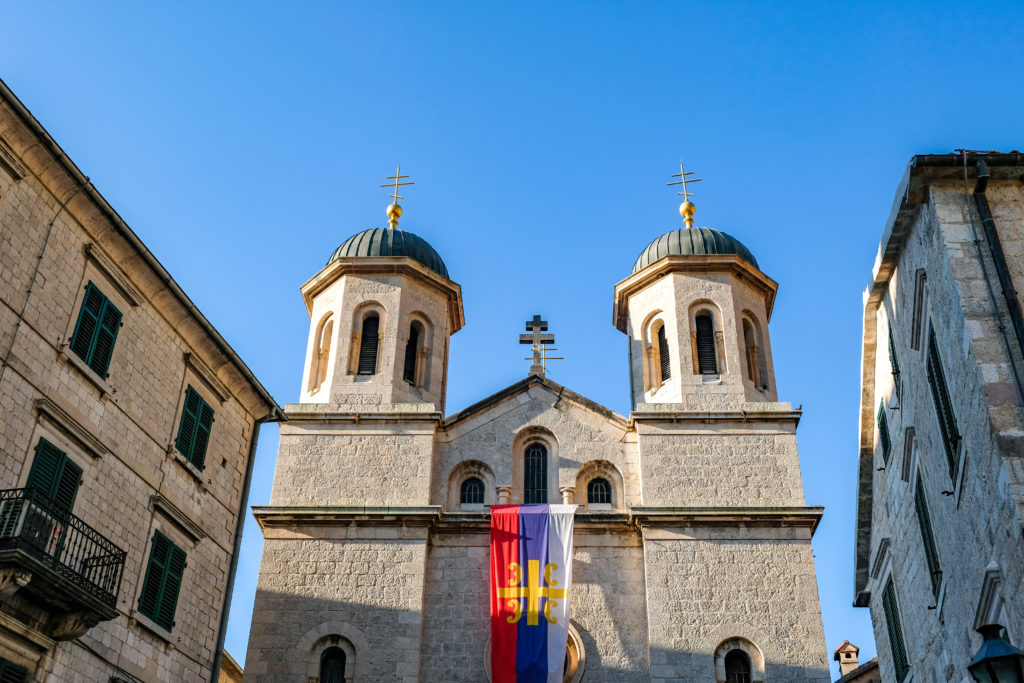
Green domes of St Nicholas Byzantine Church
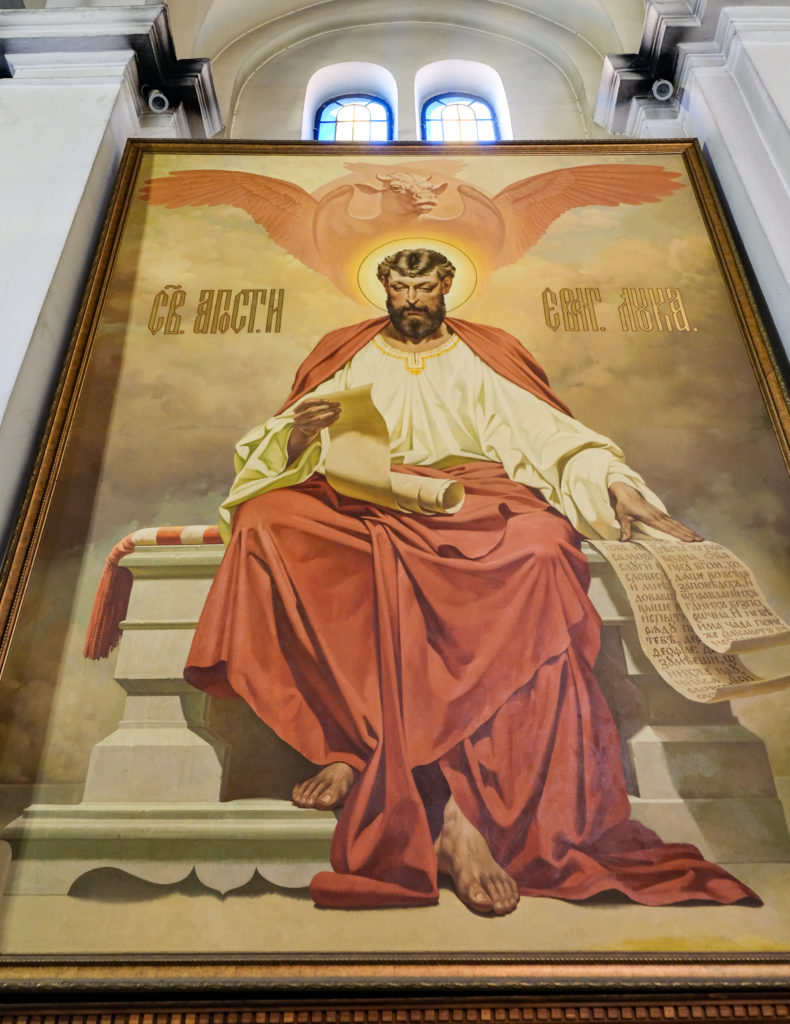
One of the massive icons of St Mathew within St Nicholas Church
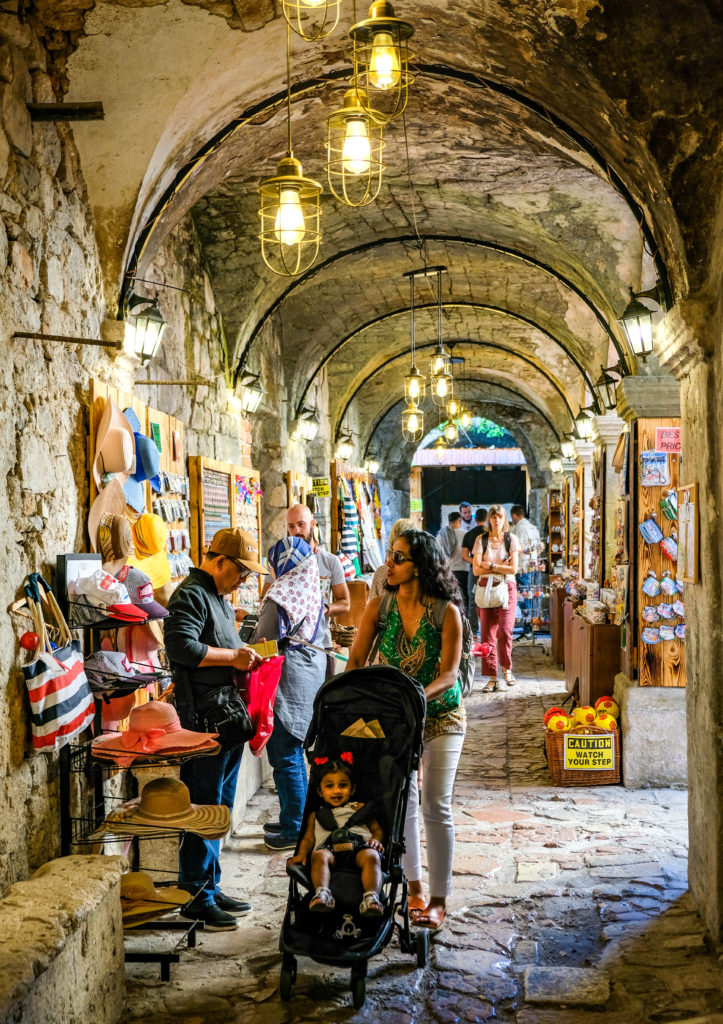
After all the Church visits the ladies decided it was time for the obligatory shopping visit next

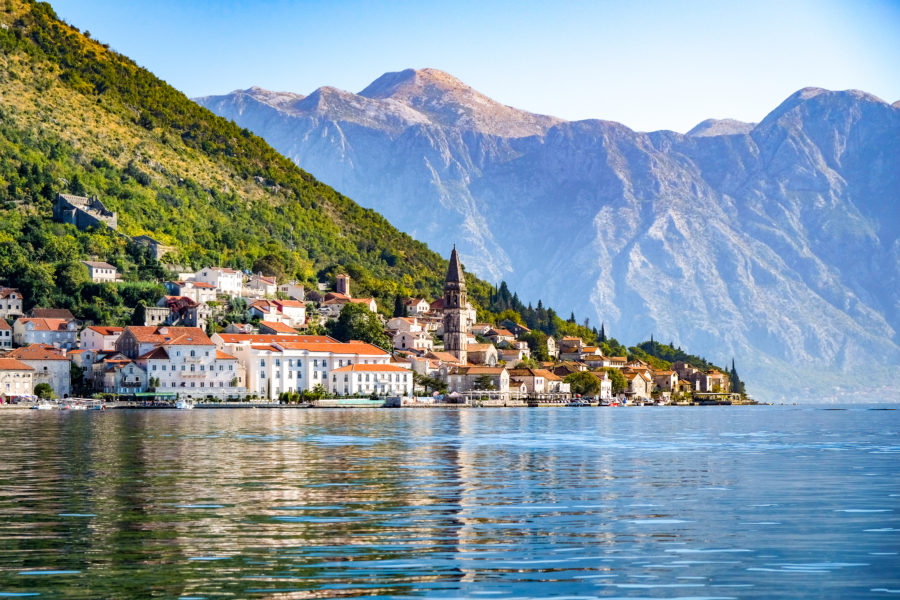
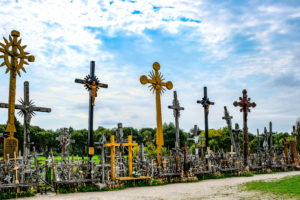

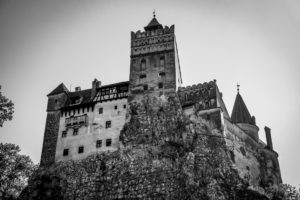




Leave a Reply
Please share your comments below!